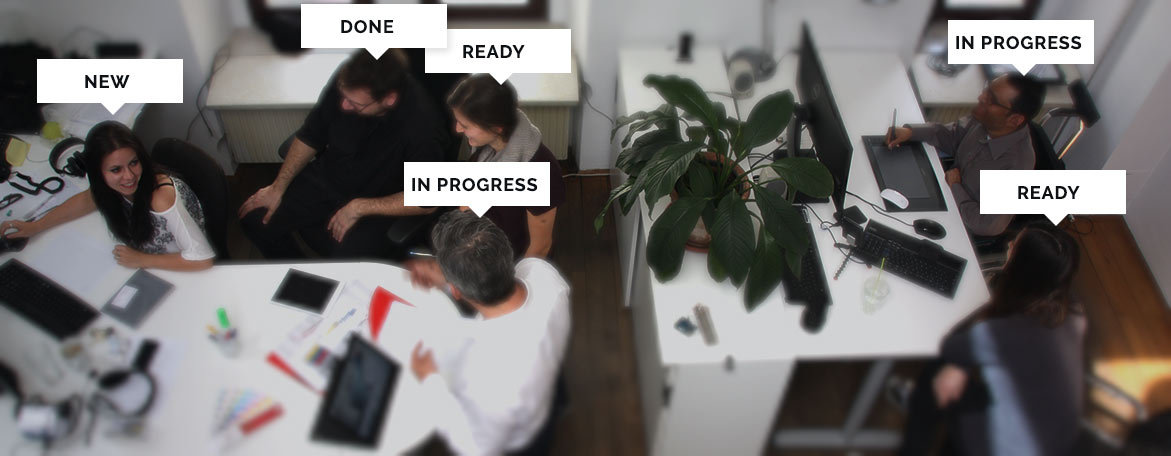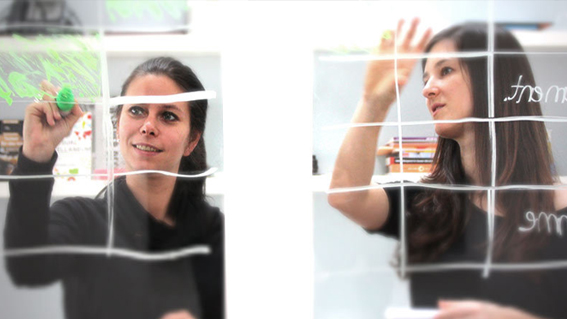
Agile Project Collaboration as a Trump
The Customer as a Colleague
- Length780 wörter
- Reading Time2 min 36 sek
- Create
Engineer
Advise20%
20%
80%
- Introduction
- Risks in Project Work
- Agile Development as an Approach to Customer Collaboration
- Good Reasons for Agility
- Too long; didn't read

Agility plays a crucial role within consulting companies in order to reflect on the dynamics and complexity of requirements – to then process them transparently. Equally, it can also realize projects with a strong focus on creation, as originality and innovation can be accommodated with the necessary frameworks also in projects on tight schedules.
Risks in Project Work
The more complex and varied a task is, the more its planning differs from the execution that follows. The projects then are usually completed in principle, yet the final result often does not meet the customer’s expectations regarding quality and adherence to schedules and costs. The reason for this often lies in the approach one takes:
- The exact target can oftentimes not yet be formulated at the beginning
- Only in specific phases can a concrete approach to the solution be developed
- The needs often change with new findings throughout the process of the project
Rigid methods such as the waterfall model are not designated for the organic development of a project; it is treated like a nuisance – with significant implications:
- Necessary intermediate steps only become clear during the course of the project and delay further development as they are unable to be considered simultaneously
- Additional expenses arise that were originally not fully budgeted in the cost estimation
- The result is a patchwork job of original requirements, interim results, and subjective optimal solutions
Agile Development as an Approach to Customer Collaboration
Agile project management involves the customer as an active collaborator – as someone to enable feedback and provide input. It gives him the right tools in hand, even when fast development cycles and technological progress make it harder for him to know the concrete result of the project already. The customer commissions an external contractor with a project in its entire complexity, yet obtains the discretionary competence due to agile management; an partition of power and skills that eventually leads the project to an optimal result.
In order to work out the developments and results with the customer in the following process, to coordinate and get the green light to proceed, kalbeck.media works with agile methods; supported, tracked, and visualized on a separate collaboration platform under projects.kalbeck.com. Transparency and flexibility are the top priorities. Feedback and ratings from customers and emerging issues can be prioritized, categorized and considered regarding their potential for any further implementation. The customer can decide how his project is going to be implemented and is provided with the compromises or extensions that would come with the preponing of issues as well as the efforts that would come with the selection or deselection of features.
Agile project management does not make developers faster but more efficient; designers do not become more creative, but are able to more quickly find imagery and implementations that correspond to the needs of the customer and yet retain exceptional character; strategists ultimately do not present more measures, yet can more accurately identify those that fit the individual company on all levels.
Agile management is not a guarantee of cheaper or faster projects, rather it depicts a problem in a more realistic way than other models pretend to do and takes the right approaches to try and solve it.
Good Reasons for Agility
Transparency of Implementation and Progress
- Efforts are estimated directly from the team
- The status of the project is visible in detail and comprehensible at any time
- The estimation of efforts make the realization of extensions or changes transparent to the customer
Optimized Communication
- Bugs or requests for new features can be reported via a single access point
- Early feedback enables continuous quality assurance and optimization
- At the end of the project it is not the hope for a contemporary result to be expected, rather the knowledge about the best solution on both ends
- Customers can verify approaches and implementations and adapt steps if needed
- First results are quickly visible
- Releases are performed in short and defined intervals
- For large projects smaller rollouts are also possible with intermediate steps to integrate results gradually in the enterprise workflow and to anchor them in the company
- The focus of the customer is not only reflected in the order, but is supported by his prioritization in the current project
- The subjectively most important points can be prioritized and implemented even in a short period of time
- Adjustments are possible between separate releases
- The individual project phases are defined by the customer through his prioritization
- Transparency: Efforts are estimated from the team, the status is visible at any time
- Communication: Bugs or requests are centrally collected, early feedback enables continuous quality assurance
- Result-orientation: Clients prioritize tasks and decide on the focus of the project
- Flexibility: Adjustments are possible between the releases
Result-oriented Development
Accorded Priority
High Flexibility
Too long; didn't read
Good Reasons for Agility:
Related Articles
Agile Projects at Work
Agile Customer Collaboration in Everyday Work
With projects.kalbeck.com, kalbeck.media provides a key tool for the distribution of tasks and prioritization of process in agile projects.
About Us
kalbeck ventures hautnah
The best ingredients made to measure – for results to individual tastes.
All done by the digital manufacturer in the heart of Vienna .
CRM with anger assurance
Getting rid of any client
Is the customer supposed to be the king? Oh, come on. The customer is an applicant and has to be treated like one. kalbeck.media provides instructions for the most efficient way to lose clients.
The KAIDOO product series
Digital precision tools
Highly specific functionality, optimal symbiosis, and developmental efficiency allow kaidoo:screen, kaidoo:things, kaidoo:CMS, and kaidoo:data to be transformed into tailored and up scale technology tools in the area of digital manufacturing. kaidoo:slides and kaidoo:mag complement the product series as the valuable solutions.





